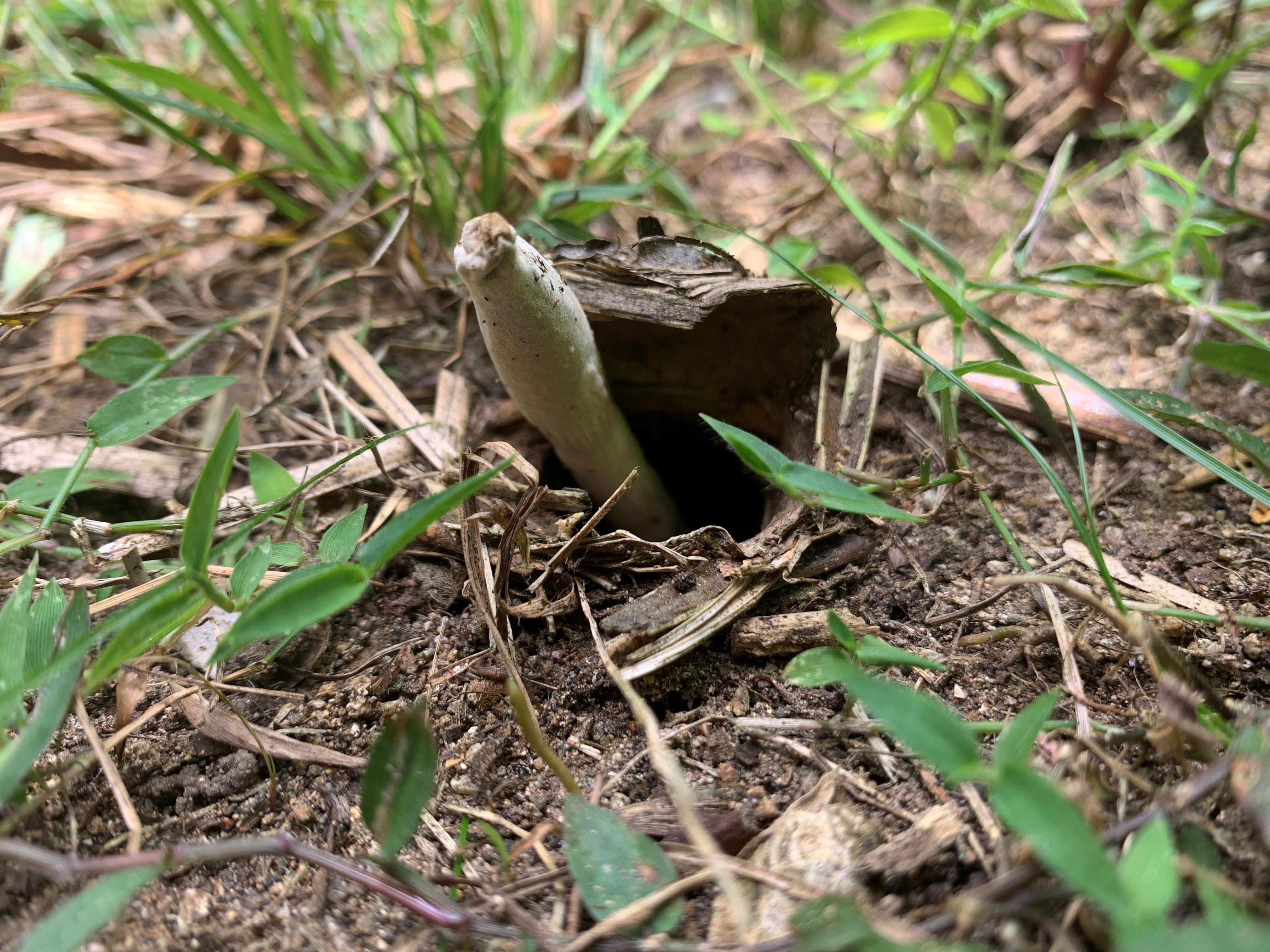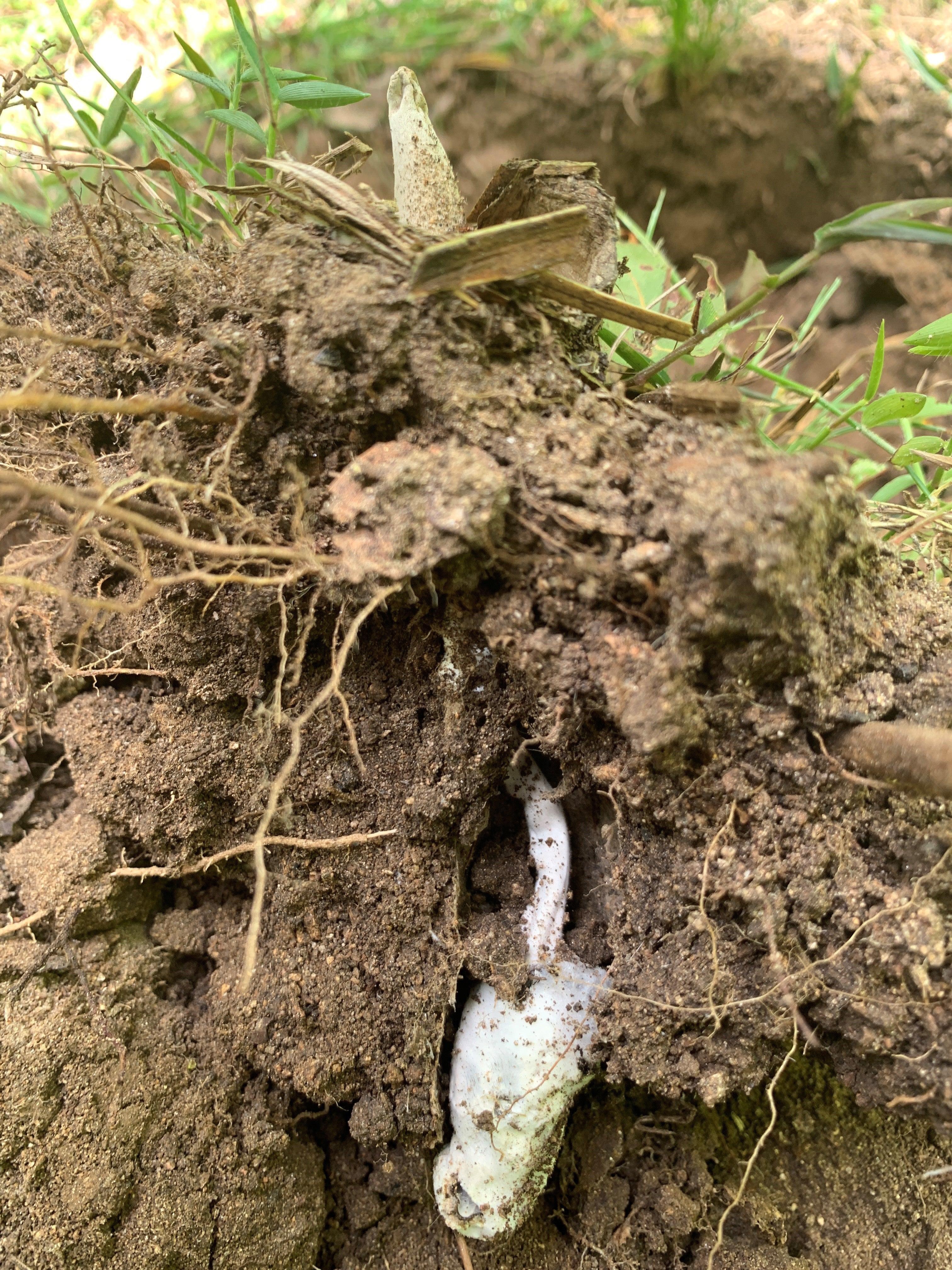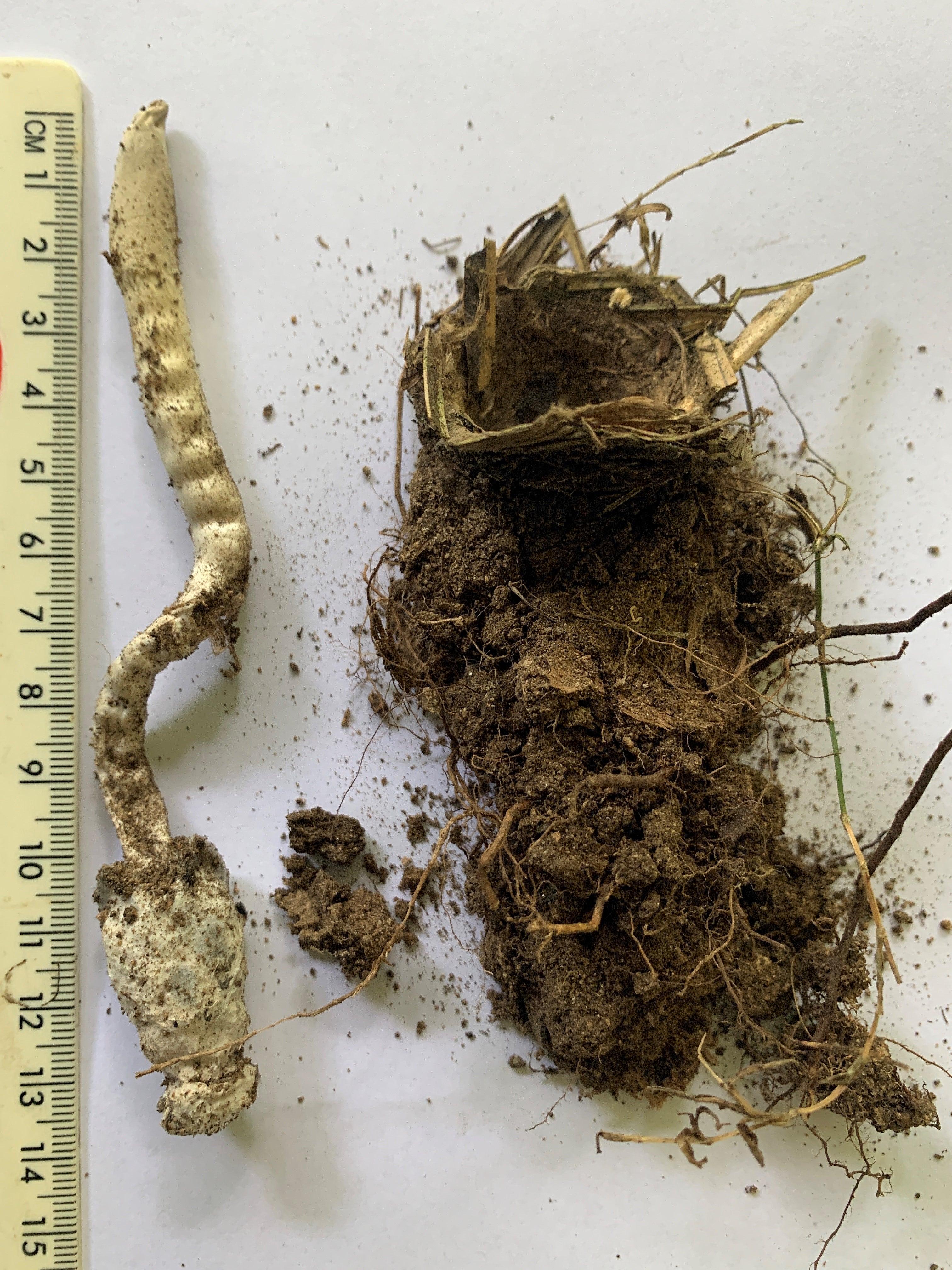Cordyceps fungi traps trapdoor spider
Amazing discovery on a local property of a cordyceps, known as the 'zombie' fungi
During my regular morning walk through the Conservation Area on my property I had noted a trapdoor spider burrow in the middle of the path. This was significant as I had not seen any other trapdoor burrows of this type on the property and the area I found it in had previously been cleared of vegetation when the property was a dairy farm.
Over the weeks following my discovery I searched the surrounding area and was unable to find any other similar burrows with the distinctive trapdoor lid but they are well camouflaged so I may have just not seen them. You can imagine my intrigue when I noticed a fungal fruiting body emerging. As it was so unusual I decided to return with some digging tools and excavate the spider/fungus from its burrow to learn more about its fate. I discovered the poor spider encased in fungal hyphae and the fruiting body of what I think is a species of Cordyceps fungi.
The Cordyceps and Ophiocordyceps group of fungi, sometimes referred to as ‘zombie’ fungus, mostly infect insects as well as other arthropods. They have become well known from the BBC Planet Earth documentary showing infected ants and, more recently, the video game and television series ‘The Last of Us’. There has also been recent reports from Brazil of the discovery of a new species of cordyceps that infects trapdoor spiders.
If you are interested in finding and photographing fungi you may like to consider adding your observations to iNaturalist, a global project to record observations of the Earth’s biota - join two local iNaturalist Projects: BushCare Sunshine Coast or Land for Wildlife Nature Challenge Sunshine Coast.
Check out these interesting articles and information on Cordyceps fungi and allies:
- Bolivian Amazon Cordyceps, Mushroaming
- Zombie fungi - the truth behind the fungal villains of The Last of Us, The Royal Botanic Garden Sydney
- Parasitic fungus that infects and kills spiders discovered in Brazil, The Guardian
- Genus Cordyceps, iNaturalist



